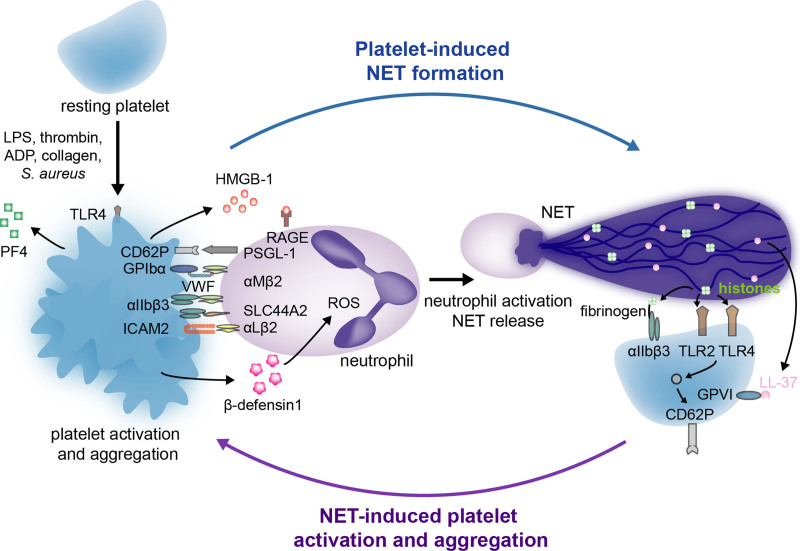Figure 1.
The dynamic interplay between platelets and neutrophil extracellular traps (NETs). While some interactions between platelets and neutrophils trigger activated neutrophils to release NETs, others lead to platelet activation and aggregation. Via various receptors, secreted ligands, and specific components of the coagulation system, platelets can directly or indirectly induce NET formation (left). In return, specific components of NETs, more specifically histones and the cathelicidin LL-37, interact with several platelet receptors that result in platelet activation and aggregation (right). CD62P indicates P-selectin; GPIbα, glycoprotein Ibα; GPVI, glycoprotein VI; HMGB-1, high mobility box group 1; ICAM2, intercellular adhesion molecule 2; LPS, lipopolysaccharide; PF4, platelet factor 4; PSGL-1, P-selectin glycoprotein ligand 1; RAGE, receptor for advanced glycation end product; ROS, reactive oxygen species; SLC44A2, solute carrier family 44 member 2; TLR 2 or 4, toll-like receptor 2 or 4; and VWF, Von Willebrand factor.

